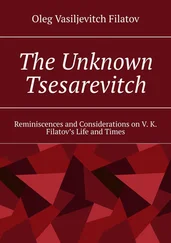John Bruce - The Lettsomian Lectures on Diseases and Disorders of the Heart and Arteries in Middle and Advanced Life [1900-1901]
Здесь есть возможность читать онлайн «John Bruce - The Lettsomian Lectures on Diseases and Disorders of the Heart and Arteries in Middle and Advanced Life [1900-1901]» — ознакомительный отрывок электронной книги совершенно бесплатно, а после прочтения отрывка купить полную версию. В некоторых случаях можно слушать аудио, скачать через торрент в формате fb2 и присутствует краткое содержание. Жанр: foreign_antique, foreign_prose, на английском языке. Описание произведения, (предисловие) а так же отзывы посетителей доступны на портале библиотеки ЛибКат.
- Название:The Lettsomian Lectures on Diseases and Disorders of the Heart and Arteries in Middle and Advanced Life [1900-1901]
- Автор:
- Жанр:
- Год:неизвестен
- ISBN:нет данных
- Рейтинг книги:5 / 5. Голосов: 1
-
Избранное:Добавить в избранное
- Отзывы:
-
Ваша оценка:
- 100
- 1
- 2
- 3
- 4
- 5
The Lettsomian Lectures on Diseases and Disorders of the Heart and Arteries in Middle and Advanced Life [1900-1901]: краткое содержание, описание и аннотация
Предлагаем к чтению аннотацию, описание, краткое содержание или предисловие (зависит от того, что написал сам автор книги «The Lettsomian Lectures on Diseases and Disorders of the Heart and Arteries in Middle and Advanced Life [1900-1901]»). Если вы не нашли необходимую информацию о книге — напишите в комментариях, мы постараемся отыскать её.
The Lettsomian Lectures on Diseases and Disorders of the Heart and Arteries in Middle and Advanced Life [1900-1901] — читать онлайн ознакомительный отрывок
Ниже представлен текст книги, разбитый по страницам. Система сохранения места последней прочитанной страницы, позволяет с удобством читать онлайн бесплатно книгу «The Lettsomian Lectures on Diseases and Disorders of the Heart and Arteries in Middle and Advanced Life [1900-1901]», без необходимости каждый раз заново искать на чём Вы остановились. Поставьте закладку, и сможете в любой момент перейти на страницу, на которой закончили чтение.
Интервал:
Закладка:
The principal safeguard which the arteries possess against strain is, of course, the extensibility and elasticity of their tissues. Unfortunately the metabolic disorders, including gout, which we have just found weakening the cardiac walls, are amongst the commonest causes of arterial degeneration also; and the two influences – gout and strain – acting together no doubt are accountable for a considerable number of cases of atheroma and chronic arteritis. It naturally might occur to us that gout and exertion could not well be associated, but this very consideration serves to explain their mutual influence in straining the heart. It is unwise, ill-timed, ill-planned muscular exercise that injures the circulation, most often on the part of the middle-aged man, who, awaking to the consciousness of growing fat and gouty, rushes inconsiderately to violent exercise for relief.
2. It is generally recognised that nervous excitement and other nervous influences tax the circulation; and endless phrases and expressions, articulate and inarticulate, testify to the universal belief in the close connection between the heart and the emotions. Quite recently Dr. Leonard Hill and Dr. George Oliver have demonstrated instrumentally the rise of blood-pressure that accompanies cerebral activity. 5 5 Leonard Hill, Allbutt's 'System of Me inc,' vol. xii; George Oliver, 'The Blood and Blood-Pressure,' p. 170, 1901.
No doubt many cases of disorder and disease of the walls of the heart and arteries originate in distress, worry, anxiety and protracted suspense; and the connection is most often seen in middle and advanced life, because these depressing emotions fall most heavily upon mankind at this period. Of the instances which I have met with I will mention but one or two by way of illustration. A member of the Reform Committee at Johannesburg at the time of the Jameson Raid, who had been confined in Pretoria Jail, came home sometime afterwards with the ordinary symptoms and signs of fatty degeneration of the heart, and died suddenly on the street. A detective officer who had tracked suspects and criminals all over the world, facing great personal danger, and on one occasion had to convey a parcel of dynamite found near a Government office to a place of safety many miles away, came under my care later on with arterial sclerosis and cerebral thrombosis, for which no other cause but a life of adventure could be discovered. These were cases of actual disease of the heart and arterial system respectively; and I need not add that disturbances or disorders of the circulation, of every degree and variety, the result of nervous excitement or depression, come constantly under our observation, especially in women. I would particularly mention, however, a group of cardio-vascular troubles that lie between these two extremes. I have frequently observed that persons of anxious and energetic temperament, burthened with responsible work of a heavy, constant and prolonged character, when they break down, as they often do, present the clinical features of high tension: the pulse is full, the heart is large, the second aortic sound is loud and ringing; there is polyuria, and a trace of albumen may be found. This disturbance of the circulation, strongly suggestive of contracted kidney, is as common in women as in men – for instance, in matrons of schools or hospitals. Nevertheless, however clear the direct connection between nervous strain and cardio-vascular disease may be in many instances, it is in other instances unreal, or more correctly indirect only. This is a matter of great practical importance. First, the nervous temperament often drives the subjects of it to physical overwork in the form of incessant and prolonged devotion to work, with insufficient hours of rest and sleep, and to unwise attempts to remove nervous exhaustion by violent muscular exercise, as we have just seen. In the second place, alcohol undoubtedly plays an important part in many instances regarded as overwork and worry and nervous exhaustion, both in men and in women – alcohol taken to enable more work to be accomplished, to steady the nerves, to promote sleep, to drive away care, or to relieve the faintness which it has itself induced. And thirdly, many of the complaints of nervous depression, lowness and worry are really due to gout, to influenza, and the like, which are at the same time the true causes of the cardiac symptoms.
3. What I have just said in connection with nervous causes of cardio-vascular affections brings us naturally to that important group of agents which may be summarily called extrinsic cardiac poisons – alcohol, tobacco, tea, coffee and lead. I will not dwell on this subject at present, for there is no need to prove the reality of the connection, and I shall have occasion to refer to some of these poisons at greater length under the head of diagnosis. Alcoholic heart occurs both in men and women; tobacco heart is extraordinarily common in our own profession, and common in clergymen and in retired members of the public services; tea-, coffee-, and cocoa- poisoning I have met with principally in students.
4. There can be no question but that by far the most prolific causes of cardio-vascular disorder and disease after 40 are disturbances of metabolism , including gout – at any rate amongst the middle and upper classes in this country. This period of life brings with it in many instances comparative relaxation from work, and a disposition to substitute quiet or even passive for active exercise; and whilst the demands of growth and development on the alimentary system have greatly declined, the pleasures of the table and ease generally are too often indulged in as a privilege of advancing years and the legitimate reward of previous years of work. The results are functional disorders of the liver, gout in regular and irregular forms, gravel, and the many associated disorders of the muscular, nervous and other systems. At the same time the arterial tension rises, for the body possesses a physiological provision for eliminating the nitrogenous products of metabolism, whether normal or abnormal, namely, the kidneys, the vaso-motor mechanism and the heart. Stimulation of the vaso-motor centre by nitrogenous waste raises the arterial pressure; the heart is excited to more vigorous contraction (if necessary it hypertrophies); and the consequent polyuria washes the intrinsic poisons out of the system. Thus it happens that in metabolic disorders, from excessive or unwholesome eating and drinking, the heart, vessels and kidneys are kept under incessant strain; and, like other organs working under strain in the gouty subject, they are the readiest to suffer – first from disorders of many kinds, and ultimately, unless reform be enforced, from cardio-vascular degeneration and chronic Bright's disease.
Of the many cases of this kind that I have seen at all ages between 40 and 80 (and others before 40), the proportion of irregular gout to acute articular gout was about 3 to 2. Under irregular gout I include goutiness in its many forms – sick headache, eczema, sciatica, lumbago, acid dyspepsia, irritable bladder, asthma, insomnia, vertigo, depression, and the familiar complexion and appearance generally of "the gouty individual," all variously combined.
In other cases the metabolic disturbances come before us not as gout or even goutiness in the ordinary acceptation of the term, but in the forms of obesity, of diabetes, of gravel, of irregular albuminuria, and of the effects of large eating and free living in general.
5. Syphilis – that fruitful cause of vascular disease, and both directly and indirectly of cardiac disease – has by no means ceased to attack the organs of circulation after 40. Whatever the date of the primary infection, syphilis is a standing danger to the heart and arteries in the middle-aged man and even in declining years. Thus, in 11 cases belonging to this group, the average age at which they came under my observation (most of them but not all complaining of cardiac distress) was 55. All of these were men. I ought to add that in a considerable proportion of the cases either physical strain, alcohol, tobacco or Bright's disease was associated with syphilis in the etiology, and sometimes more than one of these.
Читать дальшеИнтервал:
Закладка:
Похожие книги на «The Lettsomian Lectures on Diseases and Disorders of the Heart and Arteries in Middle and Advanced Life [1900-1901]»
Представляем Вашему вниманию похожие книги на «The Lettsomian Lectures on Diseases and Disorders of the Heart and Arteries in Middle and Advanced Life [1900-1901]» списком для выбора. Мы отобрали схожую по названию и смыслу литературу в надежде предоставить читателям больше вариантов отыскать новые, интересные, ещё непрочитанные произведения.
Обсуждение, отзывы о книге «The Lettsomian Lectures on Diseases and Disorders of the Heart and Arteries in Middle and Advanced Life [1900-1901]» и просто собственные мнения читателей. Оставьте ваши комментарии, напишите, что Вы думаете о произведении, его смысле или главных героях. Укажите что конкретно понравилось, а что нет, и почему Вы так считаете.
![John Bruce The Lettsomian Lectures on Diseases and Disorders of the Heart and Arteries in Middle and Advanced Life [1900-1901] обложка книги](/books/749387/john-bruce-the-lettsomian-lectures-on-diseases-and-disorders-of-the-heart-and-arteries-in-middle-and-advanced-life-1900-1901-cover.webp)











